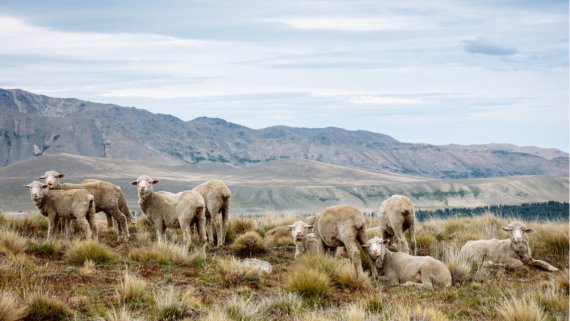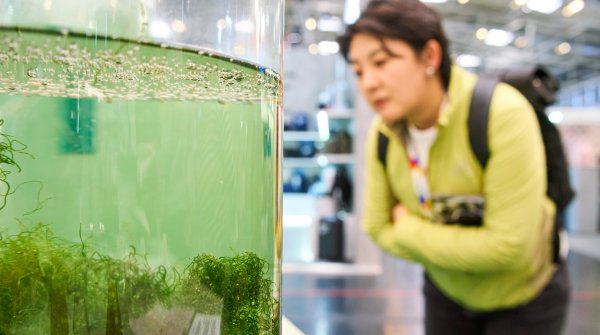Have you ever thought about what keeps your hardshell jacket waterproof? How your favorite outdoor clothes are made? If you like to be outdoors, nature is usually a matter close to your heart. But how environmentally friendly is our equipment really? What is sustainable sports fashion anyway?
The clothes of many manufacturers often contain microplastics. Most affected are garments based on synthetic fibers: especially fleece and polyester.
But what is microplastic?
Microplastics are plastics that are smaller than five millimeters and cannot be seen with the naked eye. They end up in lakes, rivers and oceans and hereby harm our environment. Because once they are there, they cannot be removed: they do not dissolve in water and are difficult to hardly degradable.
Unhealthy plastic can also be found in our drinking bottles, for example. That's why you should always look for the "BPA-free" label when buying one.
There are good, sustainable alternatives to materials that are just as functional, but much more environmentally friendly.

Leather
What do you have to look for when buying trekking and hiking shoes anyway? Most hiking boots are made of leather. But is it also possible to make them sustainably? The answer is: yes, definitely! However, companies often fail when it comes to cost: because sustainable leather is more costly. But where there's a will, there's a way. Where does leather for production come from? What chemicals are used to make it last longer? That's something manufacturers should think about. One thing is certain: animal leather is the best choice, so as not to have to compromise on functionality. Vegetable leather forms can't be set up to be water repellent without sacrificing breathability.
Cotton
Cotton dries very slowly and is only suitable for outdoor clothing to a limited extent. If you still want to go for cotton T-shirts, it's best to look for the reliable organic seal. Because conventional cotton contains many pesticides, which in turn harm the soil, biodiversity and people. Cotton, however, is not so easy to recycle: for most recycled cotton garments, the balance is 30% recycled, 70% new.

Merino wool
On the other hand, merino wool has a lot of advantages: it is not only odor-inhibiting, but also heat-regulating. Thanks to its odor-inhibiting properties, fewer washes are needed - which is good for the environment. In addition, there is a big plus: it is recyclable. Clothing made of pure merino wool can be used again for the production of new garments after recycling.
But is merino wool exclusively something for the winter? Not at all! At higher temperatures, merino wool feels up to twice cooler than synthetic fibers.
It also dries much faster, compared to cotton. That's because natural fibers form a natural protective film of wool grease that repels water. Pretty handy when you're out for longer periods of time, isn't it.
Polyester
Polyester is an umbrella term for all materials made from polyester yarn. These include, for example, fleece or neoprene.
Polyester has the advantage that it is even thinner than natural fibers and can therefore be easily processed into water-repellent garments.
But how environmentally friendly is polyester really?
Sad, but true: It has a very poor eco-balance. That's because washing it causes microplastics to dissolve from the synthetic fibers, which, as we learned above, is harmful to both humans and animals.
Recycling polyester, however, is the most advanced.
Elastane
What about the stretchability of our sportswear? Elastane is responsible for that. But did you know that elastane is a chemical fiber and has absolutely nothing to do with naturalness?
It must be made of at least 85 percent polyurethane, according to the EU Textile Labeling Regulation. Polyurethane is a material that is extracted from crude oil and natural gas. This involves an enormous amount of energy, and the substances that are produced in the process are problematic for the environment. In addition, like most synthetic fibers, elastane cannot really be recycled.
Repairing instead of throwing away
It often doesn't take much to give an old piece of clothing new life. Many outdoor brands such as Mammut, Goretex, Vaude, Jack Wolfskin or Houdini offer a comprehensive repair service. You can either send garments in for repair, bring them in yourself, or order a first aid kit for outdoor clothing and get to work yourself.
Basically, natural fibers are better for the environment. In the big wide world of outdoor clothing, it is often difficult to find the truly sustainable products. Because like every sector, the outdoor industry also struggles with greenwashing. This makes it difficult for consumers to distinguish genuine sustainable alternatives from "hypocritical" companies. There are some sustainability labels that can help you get an overview.

Basically, the longer a garment is used, the better it is for the environment. But when garments have had their day, the fit is not quite right or the garment is no longer to your liking, there are several ways to dispose of them or give them a new home. The most sustainable is always to give them away or sell them through secondhand portals. After all, every piece that needs to be recycled consumes energy. By reselling it, you can save energy and give someone a treat - because just because you no longer like the garment yourself, this could be the perfect outfit for someone else. It's also worth doing a little secondhand searching before buying anything new. In a clothing swap, you can discover new treasures among friends or in a larger circle and give old favorites a new life. This is the sustainable way par excellence.
Unbridled consumption or circular economy? Slowly but surely, the outdoor market is moving toward a circular economy. This is how sustainable sports fashion is created - with the help of recycling. Polyester takes up to 400 years to break down into microplastics, which in turn causes problems for the environment. Therefore, development is moving in the direction of bio-based synthetic fibers that can be obtained from renewable raw materials - such as bamboo.
Bio-based fibers have the advantage that they can be disposed of in an environmentally friendly way without any problems.
- ISPO awards
- Mountain sports
- Bike
- Design
- Retail
- Fitness
- Health
- ISPO Job Market
- ISPO Munich
- ISPO Shanghai
- Running
- Brands
- Sustainability
- Olympia
- OutDoor
- Promotion
- Sports Business
- ISPO Textrends
- Triathlon
- Water sports
- Winter sports
- eSports
- SportsTech
- OutDoor by ISPO
- Heroes
- Transformation
- Sport Fashion
- Urban Culture
- Challenges of a CEO
- Trade fairs
- Sports
- Find the Balance
- Product reviews
- Newsletter Exclusive Area
- Magazine







